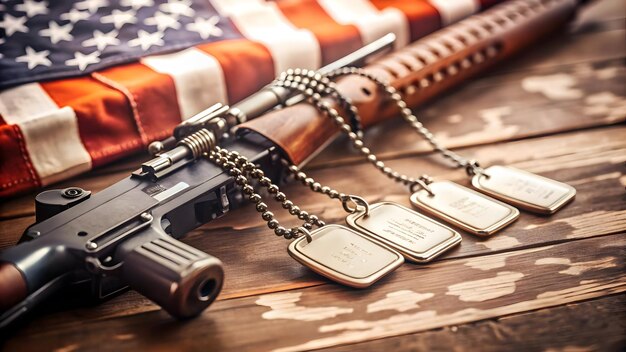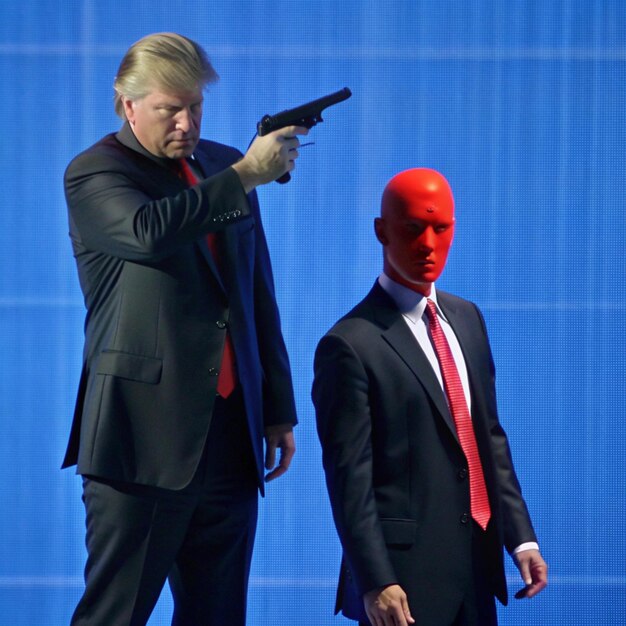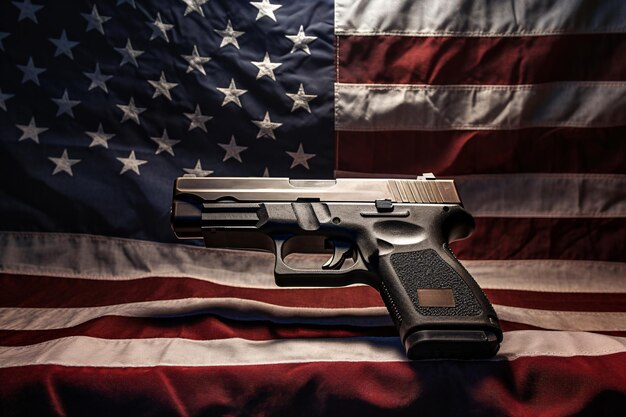Biden-Harris New Executive Order on Gun Control: A Comprehensive Analysis
Biden-Harris New Executive Order on Gun Control: A Comprehensive Analysis
On April 8, 2021, President Joe Biden and Vice President Kamala Harris unveiled a new executive order aimed at addressing the issue of gun violence in the United States. The order includes a total of six actions, which are intended to “close loopholes and modernize” various aspects of gun control laws. Here’s a
comprehensive analysis
of the key elements in this new executive order:
Enforcing existing laws
The first component of the new executive order focuses on enforcing already-existing gun control laws more effectively. The Biden administration plans to increase the use of technology in background checks, specifically regarding “ghost guns” or homemade firearms that don’t have serial numbers. Additionally, they will work on closing the “Charleston Loophole,” which can allow gun sales to proceed even if a background check isn’t completed within three business days.
Addressing the proliferation of “ghost guns”
Under the executive order, the Department of Justice is instructed to propose regulations that would clarify the definition of a firearm and make it clear that “ghost guns” are subject to regulation. This includes requiring that such homemade weapons have serial numbers, just like those purchased from licensed dealers.
Establishing a “red flag” law clearinghouse
Another element of the executive order involves creating a national database for states that have enacted Extreme Risk Protection Orders, also known as “red flag laws.” These laws allow law enforcement or family members to petition a court for an order temporarily removing firearms from individuals deemed to be a risk to themselves or others.
Implementing measures against “straw purchases”
To address the issue of “straw purchases,” where someone without a prohibition on purchasing firearms buys them for someone else who is barred from buying them, the executive order directs the Department of Justice to issue regulations that will require dealers to report multiple sales to the same person within a short period. This reporting requirement aims to help law enforcement identify and investigate potential cases of straw purchasing.
5. Improving information-sharing between federal agencies
The executive order includes provisions aimed at improving communication and data sharing among various federal agencies, such as the FBI and the Department of Justice. The goal is to identify and prevent individuals from acquiring firearms when they are prohibited from doing so under federal law.
6. Investing in community violence intervention programs
Lastly, the new executive order includes a commitment to investing in community-based initiatives that focus on prevention and intervention. These programs are intended to provide at-risk individuals with resources that can help reduce their likelihood of engaging in violent behavior or becoming victims of gun violence.
Taken together, these actions represent a significant step forward for the Biden administration on the issue of gun control. By focusing on enforcing existing laws and addressing specific loopholes, they hope to make a meaningful impact on reducing gun violence in the United States.

I. Introduction
Gun control in the United States has been a contentious issue for decades, sparking intense debates and political maneuverings.
Historical context
Gun control policies in the U.S. can be traced back to the late 18th century, with the first federal gun laws enacted after the Revolutionary War. However, it wasn’t until the late 20th century that gun control became a major political issue. The
Current state
Since then, the issue has remained divisive, with some advocating for stricter regulations and others arguing for greater gun rights. In recent years, mass shootings have fueled renewed calls for action, but efforts to pass comprehensive legislation have consistently failed.
Role of executive orders
Amidst this political stalemate, executive orders have emerged as a potential avenue for gun control initiatives. These executive orders allow the president to bypass Congress and implement policies through administrative action. However, their effectiveness is limited, as they can be reversed by future presidents.
New Biden-Harris Executive Order on Gun Control
On April 8, 2021, President Joe Biden and Vice President Kamala Harris announced a series of new executive actions on gun control.
Announcement and background
The move came in response to a surge in gun violence, particularly during the COVID-19 pandemic. According to the White House, the new measures are designed to “keep our communities safe from gun violence.”
Goals and objectives
The executive order includes several initiatives. It directs the Department of Justice to propose regulations clarifying which types of firearms fall under the definition of “machine guns.” The order also calls for improved background check systems, including closing the “boyfriend loophole,” which would extend background checks to domestic abusers. Additionally, it aims to increase research on gun violence and mental health resources, as well as invest in community violence intervention programs.

Analysis of the Key Components of the Executive Order
The Executive Order (EO) signed by President Joe Biden on January 20, 2021, titled “Protecting Public Health and the Environment and Restoring Science To Tackle the Climate Crisis,” consists of several key components aimed at reversing many actions taken during the previous administration regarding climate change and environmental regulations. Some of these significant components are highlighted below:
Rejoining the Paris Agreement
One of the most notable actions was the United States’ re-entry into the Paris Agreement, an international accord aimed at reducing global greenhouse gas emissions. This move signaled a commitment to combat climate change on a global scale and demonstrated leadership in addressing this critical issue.
Review of Previous Actions
The EO also called for a review of more than 100 actions taken during the previous administration related to climate change, energy production, and environmental regulations. The intention was to assess whether these actions should be reversed or modified based on scientific evidence and their impact on public health and the environment.
Climate Science
Another critical component focused on reinstating and prioritizing the role of climate science within the federal government. This included directing agencies to consider the best available science when developing policy, improving public access to scientific information, and ensuring that future decisions are informed by evidence-based research.
Environmental Regulations
Several environmental regulations, such as those related to methane emissions from oil and gas operations, were put back in place or strengthened. The EO also directed agencies to review and revise any regulations that may have been weakened during the previous administration, ensuring they meet current standards and protect public health and the environment.
Justice40 Initiative
Another significant component was the launch of the Justice40 Initiative, which aims to deliver at least 40% of the overall benefits from federal investments in climate and clean energy to disadvantaged communities. This initiative focuses on addressing the disproportionate impact of environmental harms on these communities and promoting equitable access to climate solutions.
Background Checks and Enhancing the National Instant Criminal Background Check System (NICS)
Background checks are an essential component of gun control policies in the US. The National Instant Criminal Background Check System (NICS) serves as the backbone of this process, allowing law enforcement agencies to quickly determine whether a prospective gun buyer is eligible to purchase a firearm based on their criminal and mental health records.
Current state of background checks in the US
Despite its importance, NICS faces significant challenges, including incomplete reporting of criminal records and mental health information from states. As a result, some individuals who should be prohibited from purchasing firearms are able to do so.
Proposed changes to improve NICS:
- Encouraging states to report more information to NICS: The federal government can offer incentives and resources to encourage states to share comprehensive data with the system. This would ensure that background checks are as thorough and effective as possible.
- Strengthening the system’s technology infrastructure: Upgrades to NICS would help it process checks more efficiently and accurately, reducing the potential for errors or inconsistencies.
Addressing the Ghost Guns and Home-built Firearms Loopholes
Ghost guns, also known as unserialized or privately made firearms, are a growing concern due to their potential to evade background checks and regulatory oversight. Although the prevalence of ghost guns is not well documented, their sale and use raise significant public safety concerns.
Proposed measures to regulate these weapons:
- Implementing minimum standards for ghost gun components: The federal government could establish regulations for the manufacture and sale of ghost gun parts, ensuring that they meet certain safety and traceability standards.
- Improving tracing and record-keeping of ghost guns: Developing strategies to track the production, sale, and transfer of ghost guns would help law enforcement investigate potential crimes and prevent future incidents.
Closing the Charleston Loophole
The Charleston Loophole
Proposed changes to address this issue:
- Extending background check waiting periods: Increasing the length of time between a gun purchase and the completion of a background check would give law enforcement more time to review potential red flags.
- Requiring more thorough review of mental health records: Expanding background checks to include comprehensive mental health records would help prevent gun sales to individuals who pose a risk to themselves or others.

I Implications of the Executive Order on Gun Control
Potential impact on gun control policies and debates in the US
The recent Executive Order on gun control signed by the Biden-Harris Administration is expected to have significant implications on the political landscape of gun control policies and debates in the United States.
Political ramifications for the Biden-Harris Administration
The administration’s move to implement gun control measures through an executive order has been met with both praise and criticism. Supporters argue that it is a necessary step in the absence of congressional action, while opponents claim it infringes on Second Amendment rights. The political ramifications for the administration could be significant, as gun control remains a contentious issue in American politics.
Implications for ongoing gun control initiatives in Congress
The executive order may also impact ongoing gun control initiatives in Congress, as some lawmakers may view it as a substitute for legislative action. However, others may use it as a rallying cry to push for more comprehensive gun control measures. The order’s success or failure could influence the trajectory of gun control debates in Congress.
Possible reactions from gun rights advocacy groups and the broader public
The NRA and other gun rights advocacy groups are likely to respond strongly to the executive order. They may launch legal challenges or campaign against Democrats in the midterm elections. The broader public’s perception of the executive order could also impact gun control debates, with some seeing it as a necessary step towards reducing gun violence and others viewing it as an infringement on their rights.
Anticipated responses from organizations like the NRA
The National Rifle Association (NRA) and other gun rights advocacy groups are expected to criticize the executive order and potentially take legal action against it. They may also use it as a rallying cry to mobilize their supporters and campaign against Democrats in the midterm elections.
Public perception of the executive order and its potential impact on gun control debates
The public’s perception of the executive order could significantly influence gun control debates. Supporters argue that it is a necessary step towards reducing gun violence, while opponents claim it infringes on Second Amendment rights. The success or failure of the order could shape public opinion and influence the trajectory of gun control debates in the future.

Conclusion
In the aftermath of a series of mass shootings that have shaken the nation, President Joe Biden and Vice President Kamala Harris took a significant step towards gun control reform by issuing an Executive Order on Gun Control in their first days in office. This order, which consists of several key components, is a bold move aimed at reducing gun violence and addressing the root causes of this persistent public health issue.
Recap of the key components:
- Background Checks: The order aims to improve and expand background checks for gun sales, including closing the “Charleston loophole” that allows some sales to proceed before a background check is complete.
- Red Flag Laws: The order supports the implementation of state and local red flag laws, which allow for the temporary seizure of firearms from individuals who pose a risk to themselves or others.
- Community Violence Intervention: The order dedicates funds towards evidence-based community violence intervention programs, which have been shown to reduce gun violence in high-risk areas.
- Mental Health: The order addresses the connection between mental health and gun violence, by calling for the creation of a national database of mental health records to help identify individuals who should not be able to purchase firearms.
- Technology: The order also includes provisions related to technology, such as funding for research into gun traceability and the development of model state legislation that would require domestic violent offenders to surrender their firearms.
Analysis of its potential impact and implications:
The Biden-Harris Executive Order on Gun Control represents a significant shift in the national conversation around gun violence and control. While it is important to acknowledge that the order has its limitations, particularly given the constraints of executive power, it does signal a commitment from the administration to tackle this issue head-on. The order’s provisions are expected to have a positive impact on gun violence prevention, particularly in areas with high rates of gun violence.
Consideration of next steps for further research and action:
As the implementation of the Executive Order unfolds, it is essential that researchers and advocates continue to monitor its progress and evaluate its impact. Further research will be needed to determine the effectiveness of each component of the order, as well as the role that state and local governments play in implementing and enforcing these measures. Engaging in a productive dialogue with stakeholders, including gun rights advocates and mental health professionals, will be crucial in ensuring the success of this initiative.
Conclusion:
The Biden-Harris Executive Order on Gun Control marks an important moment in the ongoing effort to address gun violence in the United States. While it is not a panacea for this complex issue, it represents a significant step towards creating safer communities and reducing the number of lives lost each year to gun violence. As the order’s provisions are implemented, it is essential that we remain vigilant, continue to advocate for evidence-based solutions, and work collaboratively towards a future where gun violence is no longer a daily reality.

